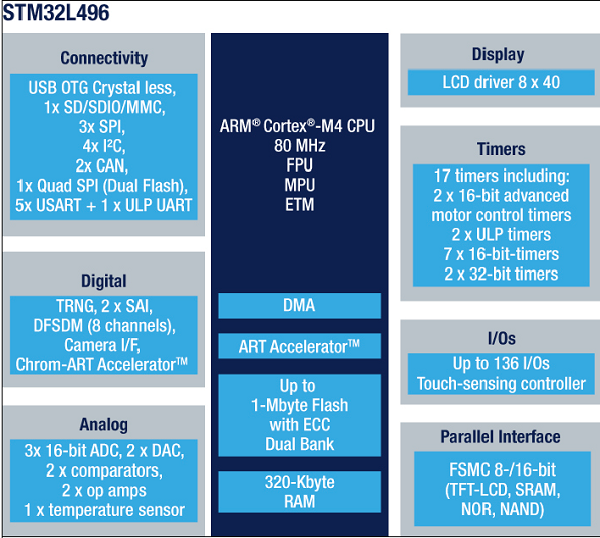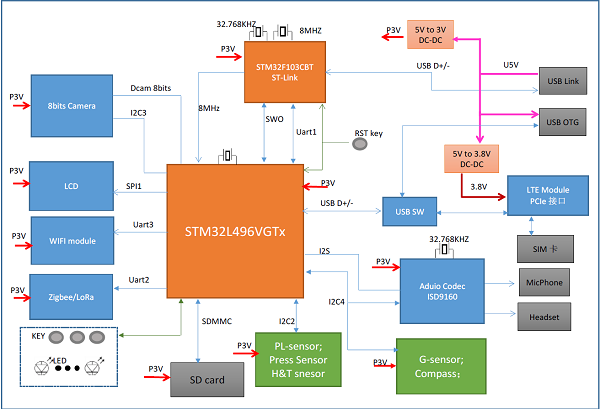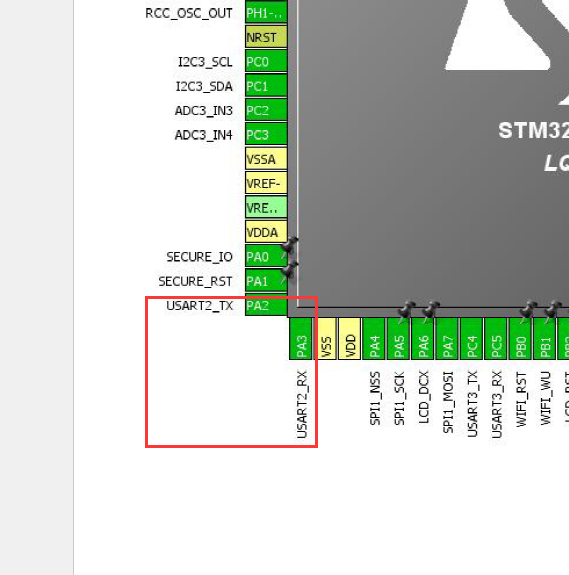This demo shows you how to use AliOS Things Developer Kit development board to produce outputs through the Universal Asynchronous Receiver/Transmitter (UART) of the backboard J903. We will be introducing the relevant code and implementation effects in this article.
Developer Kit is hardware development board based on AliOS, with a variety of peripherals. The hardware is equipped with Audio Codec, eight sensors, 8-bits digital camera, LCD display, sixes LEDs, PCIe module, USB OTG FS, and Wi-Fi module. Because the software is embedded with the AliOS system, the local data uploading to the Ali-cloud can be realized through Wi-Fi. The Developer Kit provides a convenient way for developers to learn about the development environment in combination with practical applications.
To learn more about the Developer Kit, visit https://github.com/alibaba/AliOS-Things/wiki/AliOS-Things-Developer-Kit-Brief
To follow this tutorial, you should be able to have the following:
MCU has six UARTs

UART1 is used inside the system, UART3 communicates with Wi-Fi module BK7231, and UART2 is connected to Zigbee/LoRa on the J903 backboard

#define UART_DATA_BYTES 14
uart_dev_t opt_uart;
char readbuf[UART_DATA_BYTES] = {0};
static void init_uart(void)
{
opt_uart.port = 2;
opt_uart.config.baud_rate = 115200;
opt_uart.config.data_width = DATA_WIDTH_8BIT;
opt_uart.config.flow_control = FLOW_CONTROL_DISABLED;
opt_uart.config.mode = MODE_TX_RX;
opt_uart.config.parity = NO_PARITY;
opt_uart.config.stop_bits = STOP_BITS_1;
hal_uart_init(&opt_uart);
}
static void app_delayed_action(void *arg)
{
uint32_t recBytes = 0;
int ret = -1;
LOG("Uart opertion demo %s:%d %s\r\n", __func__, __LINE__, aos_task_name());
init_uart();
LOG("Uart init finished %s:%d %s\r\n", __func__, __LINE__, aos_task_name());
/* receive a message and sent out through the uart */
ret = hal_uart_recv_II(&opt_uart, readbuf, UART_DATA_BYTES, &recBytes, 10);
LOG("Uart receive finished %s:%d %s\r\n", __func__, __LINE__, aos_task_name());
if((ret == 0) && (recBytes > 0))
{
LOG("Read something %s:%d %s\r\n", __func__, __LINE__, aos_task_name());
hal_uart_send(&opt_uart, readbuf, recBytes, 10);
} else {
LOG("Read none %s:%d %s\r\n", __func__, __LINE__, aos_task_name());
}
aos_post_delayed_action(500, app_delayed_action, NULL);
}The USB-to-TTL line is connected to J903 RX/PA3 and TX/PA2. The following figure shows that this UART is UART2

The serial port tool opens the serial port and sends Hello world! rn, a total of 14 bytes, and the serial port returns the sending content. If only Hello is sent, the result is returned in 14 bytes, which is specifically "HelloHelloHell".
Learn more about the UART demo by visiting the Developer Kit UART demo GitHub page.
Completing a Smart Home System with 30 Lines of JavaScript Code
GXIC - November 2, 2018
Alibaba Clouder - April 17, 2020
GXIC - February 20, 2020
Alibaba Clouder - August 20, 2020
Alibaba Clouder - October 14, 2020
GXIC - November 2, 2018
 IoT Platform
IoT Platform
Provides secure and reliable communication between devices and the IoT Platform which allows you to manage a large number of devices on a single IoT Platform.
Learn More IoT Solution
IoT Solution
A cloud solution for smart technology providers to quickly build stable, cost-efficient, and reliable ubiquitous platforms
Learn More Global Internet Access Solution
Global Internet Access Solution
Migrate your Internet Data Center’s (IDC) Internet gateway to the cloud securely through Alibaba Cloud’s high-quality Internet bandwidth and premium Mainland China route.
Learn MoreMore Posts by GXIC